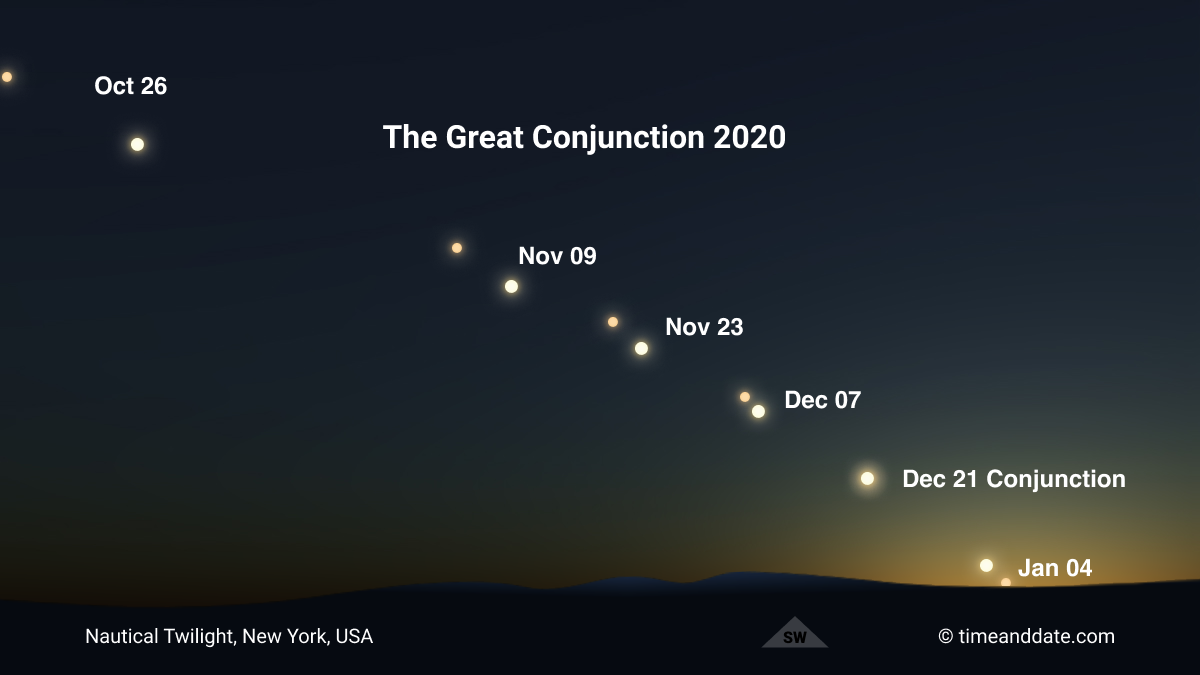The Great Conjunction of December 21: A Celestial Event to Remember

On December 21 in the annals of history, a celestial event of extraordinary significance unfolded across the night sky, captivating both astronomers and stargazers alike. Known as the Great Conjunction, this rare planetary alignment occurs when two of the largest planets in our solar system, Jupiter and Saturn, come into close proximity to each other.
The Great Conjunction, which typically happens every 20 years, held a special allure on December 21, as it marked the closest observable approach of Jupiter and Saturn since the Middle Ages. This convergence had astronomy enthusiasts eagerly awaiting a moonlit spectacle that would leave a profound impact on the heavens.
As the veil of dusk blanketed the world on that awe-inspiring evening, committed astronomers with their telescopes in tow aimed their lenses skyward, ready to delve into the magic of the cosmos. The stars began to twinkle above like suspended diamonds, only adding to the anticipation of what was to come.
The Great Conjunction, often referred to as the 'Christmas Star' or 'Star of Bethlehem,' mirrored the legendary biblical event that guided the Three Wise Men towards the birth of Jesus Christ over two millennia ago. The planets' closeness created the illusion of a single, radiant entity, casting an ethereal glow upon the heavens, reminiscent of an ancient celestial beacon.
In the scientific realm, the Great Conjunction serves as a testament to the laws of planetary motion and the remarkable precision that governs our celestial dance. As Jupiter and Saturn align, their gravitational forces interact, creating an intricate gravitational tug-of-war, subtly influencing the orbits of these enormous gas giants. With every revolution, they harmonize their journey through space, like dancers in a cosmic ballet.
The historical significance of the Great Conjunction on December 21 cannot be overstated. While the Middle Ages marked the previous close approach of Jupiter and Saturn, the world looked upon the night sky with a renewed sense of wonder. The event stirred curiosity, inspired amateur astronomers to embark on celestial voyages of discovery, and provided a moment of unity in appreciating the vastness of our universe.
In the era of rapid scientific advancement, this celestial rendezvous enabled scientists to comprehend and document the planetary dynamics with modern precision, laying a foundation for future studies. Astronomical organizations worldwide synchronized their observations, capturing detailed data that will contribute to our understanding of the solar system's evolution.
Beyond the scientific and historical implications, the Great Conjunction held personal significance for countless individuals. It served as a reminder of our place in the cosmos, evoking a sense of humility and connection to the vast universe that envelops us. Its sheer splendor ignited a spirit of intrigue and piqued the imagination, inspiring many to explore the wonders of astronomy and the mysteries that lie beyond our own world.
As the celestial curtain drew closed on the Great Conjunction of December 21, its impact will endure for generations to come. The rare cosmic alignment served as a poignant reminder of the beauty that exists in our universe and the awe-inspiring wonders that await us. It united astronomers, scientists, and dreamers in a shared passion for exploration and discovery, while reminding us all of the vast possibilities that lie within the reach of our imagination.
In conclusion, the Great Conjunction of December 21 bestowed upon us a celestial display that unfolded like a masterpiece in the tapestry of time. As we reflect upon this remarkable event, may we carry the inspiration it ignited within us, forever exploring the frontiers of knowledge and celebrating the everlasting connection between humanity and the cosmos.